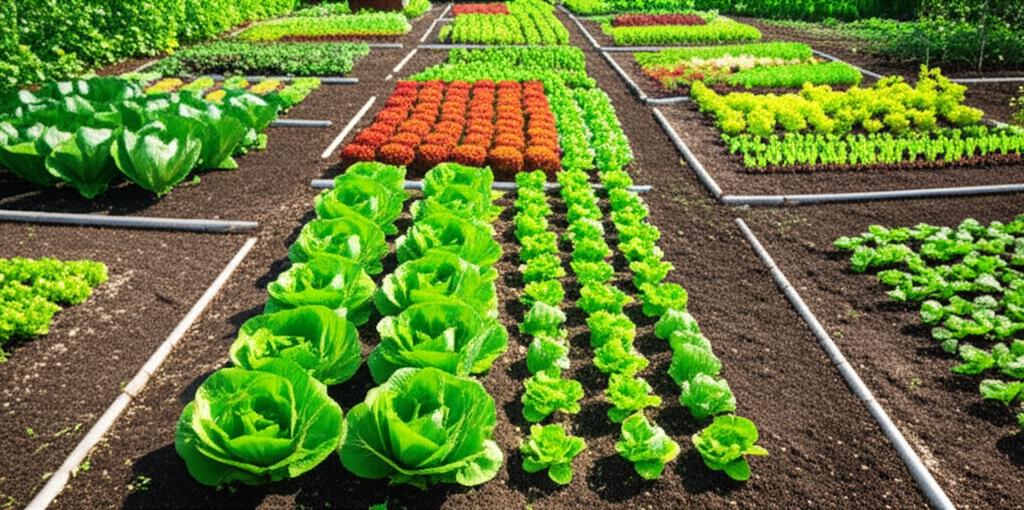Harness Endless Harvests with Succession Planting Strategies
The beauty of a garden often lies in its rhythm, mirroring the cycles of life with bursts of growth followed by renewal. For vegetable gardeners, succession planting offers a way to sustain that rhythm, ensuring a steady flow of fresh produce rather than a single overwhelming harvest. This method transforms bare beds into a continuous source of abundance, rewarding careful planning with baskets of vegetables throughout the growing season.
Succession planting is not a complex puzzle, though it may seem so at first. It is simply the practice of staggering crop plantings over time, allowing new growth to replace what has been harvested. With a bit of foresight, gardeners can maintain a thriving, productive space that keeps giving week after week.
Understanding the Core of Succession Planting
At its heart, succession planting means avoiding the temptation to sow an entire crop at once. Instead, you divide your seeds or seedlings into smaller batches, planting them at intervals. This can also involve replacing early-maturing crops with new varieties as space becomes available, maximizing every inch of soil.
There are three primary ways to approach this technique:
- Staggered sowing of a single crop. Plant lettuce or radishes every two weeks to ensure a constant supply ready for harvest.
- Crop rotation in the same bed. After pulling early radishes, sow bush beans in their place to keep the area productive.
- Interplanting for efficiency. Pair slow-growing crops like broccoli with fast-maturing ones like spinach, harvesting the quicker crop before the larger one needs the space.
These strategies help avoid the all-too-common cycle of feast followed by famine, creating a balanced and sustainable garden.
The Value of a Steady Harvest
A vegetable garden serves as more than a visual delight; it is a vital source of nourishment for many households. A single, massive harvest might seem bountiful, but it often leads to waste when the kitchen cannot keep up. Succession planting aligns production with consumption, delivering manageable amounts of fresh produce over time.
Beyond practicality, this method fosters a sense of security. Knowing that your garden will provide week after week, with new crops stepping in as others fade, builds confidence in your ability to sustain yourself. Whether it is the peak of tomato season or the quiet arrival of late carrots, the garden remains a reliable partner.
Choosing Crops for Continuous Yields
Not all vegetables lend themselves to succession planting, but many garden staples thrive under this approach. Focus on crops that mature quickly or offer extended harvests with repeated sowings. Some excellent choices include:
- Leafy greens. Varieties like lettuce, spinach, and arugula grow fast and respond well to staggered plantings.
- Root vegetables. Radishes and carrots can be sown every few weeks for a rolling supply of crisp roots.
- Legumes. Bush beans and peas often produce heavily for a short period, so additional plantings ensure fresh pods later.
- Corn. Sowing in blocks at different times allows ears to ripen in waves rather than all at once.
Larger, slower crops such as pumpkins or winter squash typically do not suit this method due to their long growing periods and space demands. Prioritize vegetables that turn over quickly or yield continuously with minimal effort.
Mastering Timing and Space for Success
Determining when to plant is a key challenge in succession gardening. The frequency depends on the crop and your local growing season. Quick growers like radishes may need sowing every 10 to 14 days, while beans might require a three-week gap between plantings to maintain a steady flow of pods.
Space management is equally important. Overcrowding stifles growth, yet empty soil represents a missed opportunity. Reserve sections of your beds for later sowings, or keep seedlings in pots ready to transplant as gaps appear. Mixing varieties, such as heat-tolerant and cool-season lettuces, also helps adapt to changing weather, extending your harvest window.
Practical Habits for Seamless Succession
A few simple practices can elevate your succession planting efforts and reduce frustration:
- Track your progress. Note planting and harvest dates in a journal to identify patterns and refine your timing over seasons.
- Begin modestly. Experiment with one or two crops before overhauling your entire garden layout.
- Plan for transitions. As you clear a crop, have seeds or starts ready to fill the space without delay.
- Maintain visual unity. Reuse trellises, mulch, or border plants to keep the garden cohesive even as crops change.
These habits transform succession planting into a natural, intuitive process rather than a burdensome task.
Embracing the Rhythm of a Succession Garden
What truly captivates me about this approach is how it reshapes your connection to the garden. Rather than a fleeting peak of abundance, you experience a series of small, joyful harvests. Each crop’s end feels less like a loss and more like an invitation to begin anew, prompting regular walks through the beds to observe and adjust.
The benefits extend to the kitchen as well. Harvests arrive in sensible quantities, perfect for fresh meals without the pressure of preserving a surplus. This fosters a deeper link between the garden and the table, making each dish feel like a direct gift from the soil.
Building Your Succession Journey
If you are new to this method, start with a single, forgiving crop like lettuce or beans, planting in two or three intervals. Observe how the staggered timing shifts your harvest rhythm, and use those insights to expand to other vegetables. Over time, you will develop an instinctive sense for the garden’s needs, seeing empty spaces as chances to sow and harvests as prompts to plan ahead.
By viewing your garden as a cycle of constant renewal, you cultivate not only a steady supply of food but also a profound bond with the land. Succession planting offers this quiet reward, accessible to any gardener willing to embrace its gentle, ongoing dance of growth.



